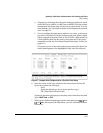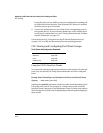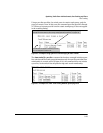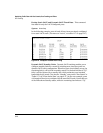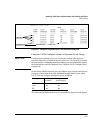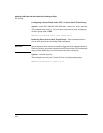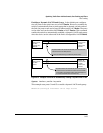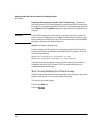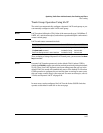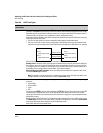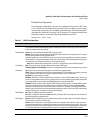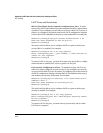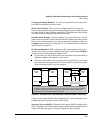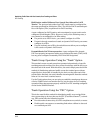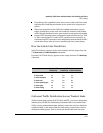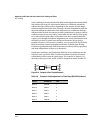
Optimizing Traffic Flow with Port Controls, Port Trunking, and Filters
Port Trunking
Trunk Group Operation Using LACP
The switch can automatically configure a dynamic LACP trunk group or you
can manually configure a static LACP trunk group.
No t e LACP requires full-duplex (FDx) links of the same media type (10/100Base-T,
100FX, etc.) and the same speed, and enforces speed and duplex conformance
across a trunk group.
LACP trunk status commands include:
Trunk Display Method Static LACP Trunk Dynamic LACP Trunk
CLI
show lacp command Included in listing. Included in listing.
CLI
show trunk command Included in listing. Not included.
Port/Trunk Settings screen in menu interface Included in listing. Not included
Thus, to display a listing of dynamic LACP trunk ports, you must use the show
lacp command.
No t e Dynamic LACP trunks operate only in the default VLAN (unless GVRP is
enabled and Forbid is used to prevent the trunked ports from joining the default
VLAN). Thus, if an LACP dynamic port forms using ports that are not in the
default VLAN, the trunk will automatically move to the default VLAN unless
GVRP operation is configured to prevent this from occurring. In some cases,
this can create a traffic loop in your network. For more on this topic, refer to
“VLANs and Dynamic LACP” on page 9-29.
In most cases, trunks configured for LACP on the Series 5300XL Switches
operate as described in table 9-6 on the next page.
9-25



